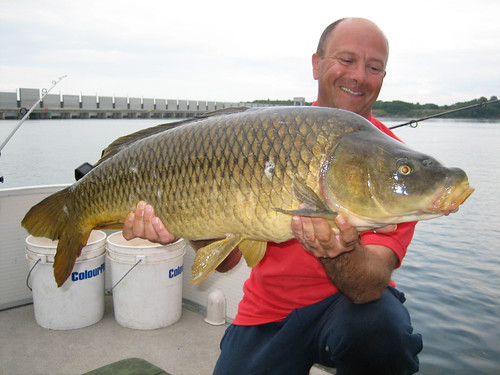Fishing is a pastime going back thousands of years. Every fisherman knows the serenity of fishing on a sunny day, as well as the tense excitement of the first bite. There are constantly new things to learn about this ancient activity, and you may learn some things that are more effective than what you are doing today. Continue on for some excellent advice which can make your fishing better.
Know your boat’s weight capacity when you go fishing. The risk of your boat being tipped over is not something you want to experience when you are far from shore. Your safest best is to stay way below your boats weight capacity.
Search your fishing environment for areas of deep water. Always look for an area that is deep when river fishing. Fish love to rest in pools of cool, deep water, particularly in the warmer months. Fish will also tend to congregate around ledges and large rocks. Once you locate a spot where the fish are biting, note it down so you can find it again in the future.
If you are bottom fishing with shad, cut the tail of your bait off before placing it on your hook. This prevents the bait from tangling due to spin as it goes further into the water. An added benefit to cutting the tail off is that it will attract more fish.
Larger Bait
Using larger bait can help you catch larger fish. Larger bait is generally more expensive, but it could be worth the cost for a big fish at the end of your line. When you are using larger bait, you will increase your odds of catching a big hungry fish looking for a meal.
Live earthworks can be fattened the night before using to make them easier to get on the hook and more appetizing to fish. Store your worms in a layer of newspaper in a secure container overnight. The extra humidity and cooler temperature will plump them up a bit.
You can use grubs to successfully catch bass. They’re really small lures that can catch big fish. Many fishermen use them to catch smallmouth bass, and they also make great bait for largemouth bass. They are perfect for fishing highland reservoirs that do not have a large amount of coverage.
Keep your eyes out for surface fish to find the bigger fish below in deep waters. You may run across debris such as wood floating in the water. Frequently, you will see large game fish around that area. If you notice seagulls feasting on smaller fish in an area of the water, larger fish are probably swimming just below.
Make sure your hands are clean and free of heavy fragrances when fishing. If your hands have a strong smell, it might get on to the bait, and this will be detected by fish. If the fish smells this on the bait or lure, they probably will not bite.
Tackle Box
Familiarize yourself with the local rules and regulations of your intended fishing spot. Some areas may not permit you to fish in specific rivers or lakes, while others may have banned specific kinds of bait. Regulations are typically found through the fishing and wildlife departments of your state, and are often available online.
A small tackle box containing only the necessary supplies is preferred for most fishermen. Lugging your huge tackle box with every piece of equipment you have ever bought is unnecessary and cumbersome. By taking only what is necessary for that day’s fishing, you will have the greatest mobility.
Understand that patience is required for fishing. Although it might be common sense, most people give up easily when they don’t catch a fish during the first thirty minutes. You need to have plenty of time and patience to become a skilled fisherman, so make sure you can make the commitment before you start.
Bass fishing will revolve around your choice of lure. You have to choose different lures depending on different situations. You should use different lures based on the time of day, fish type and water type. Each lure you use has it’s own unique purpose which can be used for different bass at different locations. It generally takes a bit of time and a learning curve to find the lure that is just right.
The improved clinch knot is a good knot to use when you attach your lure or hook to your fishing line. Take hold of the end of your hook, and slide the line tip through it. Then make several turns over the line, preferably five, and pass the end into the eye and coil. Complete the not by pulling the lead end through the initial loop and then tightening as much as possible.
Fishing is something people have done and enjoyed for many years and it will continue to be enjoyed by many in the future. Take the tips in this article, and bring them along on your next fishing trip. Try each suggestion, and see if you end up catching the limit!

